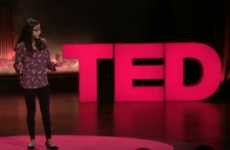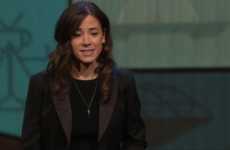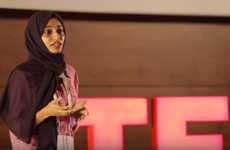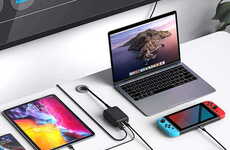
Need Inspiration?
Get inspired by 4,000+ keynote speaker videos & our founder, a top keynote speaker on innovation.
Dan Gibson's Talk on Synthetic DNA Reveals Ground-Breaking Tech
Kalin Ned — August 7, 2018 — Keynote Trends
References: syntheticgenomics & ted
Scientist and engineer Dan Gibson delivers a TED talk on synthetic DNA that gives concrete examples of the efficacy of modern technology within the field of biology. In a well-spoken and informative manner, the speaker briefly outlines the processes of "building synthetic cells and printing life" with the BioXP — the first DNA printer, and the DBC — a biological teleporter. These two cutting-edge machines are specifically designed to speed up the process of the multistep and multimonth flu vaccine manufacturing process. The scientists worked alongside the public and the government to ensure that this technology is responsibly developed and well regulated.
Dan Gibson and his team started with a DNA code in a computer to create a synthetic bacterial cell. Since "synthetic DNA is a commodity," one can order the chemicals in the DNA's makeup — G, A, T and C, and stitch them together to make a genome. With skill and precision, the 'genome writers' were able to create a complete genome with one million letters. Their process was given the name 'Gibson Assembly' and it is now used as "the gold standard tool" in laboratories around the world. The next step in developing a DNA printer was figuring out a way to convert the genome into a "free-living, self-replicating cell." Dan Gibson's team successfully began reprogramming cells and converting them, thus bringing about the 'birth' of the first synthetic cell which was called Synthia.
Dan Gibson's talk on synthetic DNA explains how a biological printer has the ability to download genome information from the internet and instantly print it. This, in turn, enables the possibility of biological teleportation, which essentially means that "if biological entities [...] are written into the code of DNA [...] and one can read and write that code of DNA, then [the biological entities] can be reconstructed in a distant location." The BioXP was seen in action as it quickly and efficiently developed a flu vaccine for a virus in China in just a few days. The traditional way would have taken weeks or months.
Essentially, the DNA printer enabled the creation of the biological teleporter — DBC (Digital-to-Biological Converter) which, as the talk on synthetic DNA specified, can begin from a digitized DNA code and convert it into a biological entity like DNA, RNA, proteins and viruses. As this machine can be useful for "distributed manufacturing of medicine," the synthetic cell technologies can surely revolutionalize the efficacy of treatment, transform economies, set out a new industrial revolution and do all of that with sustainability in mind.
Dan Gibson and his team started with a DNA code in a computer to create a synthetic bacterial cell. Since "synthetic DNA is a commodity," one can order the chemicals in the DNA's makeup — G, A, T and C, and stitch them together to make a genome. With skill and precision, the 'genome writers' were able to create a complete genome with one million letters. Their process was given the name 'Gibson Assembly' and it is now used as "the gold standard tool" in laboratories around the world. The next step in developing a DNA printer was figuring out a way to convert the genome into a "free-living, self-replicating cell." Dan Gibson's team successfully began reprogramming cells and converting them, thus bringing about the 'birth' of the first synthetic cell which was called Synthia.
Dan Gibson's talk on synthetic DNA explains how a biological printer has the ability to download genome information from the internet and instantly print it. This, in turn, enables the possibility of biological teleportation, which essentially means that "if biological entities [...] are written into the code of DNA [...] and one can read and write that code of DNA, then [the biological entities] can be reconstructed in a distant location." The BioXP was seen in action as it quickly and efficiently developed a flu vaccine for a virus in China in just a few days. The traditional way would have taken weeks or months.
Essentially, the DNA printer enabled the creation of the biological teleporter — DBC (Digital-to-Biological Converter) which, as the talk on synthetic DNA specified, can begin from a digitized DNA code and convert it into a biological entity like DNA, RNA, proteins and viruses. As this machine can be useful for "distributed manufacturing of medicine," the synthetic cell technologies can surely revolutionalize the efficacy of treatment, transform economies, set out a new industrial revolution and do all of that with sustainability in mind.
6.2
Score
Popularity
Activity
Freshness

















